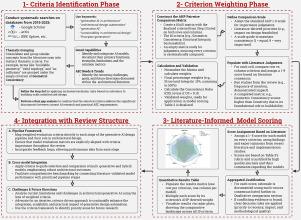建筑设计自动化的生成式AI方法
IF 11.5
1区 工程技术
Q1 CONSTRUCTION & BUILDING TECHNOLOGY
引用次数: 0
摘要
本文综述了生成式人工智能(AI)在建筑实践中自动化建筑设计中的潜力和挑战。对先进的生成模型进行了全面的分析,以评估它们在八个架构标准上的性能。定性评估表明,将扩散模型与自回归技术相结合的混合方法为建筑应用提供了最有希望的结果。尽管取得了进步,但仍然存在重大挑战,包括可伸缩性限制、碎片化的工作流集成以及缺乏标准化的评估框架。通过跨学科合作和战略研究方向确定潜在的解决方案,例如制定统一的评估指标,增强模型适应性,集成能源优化设计生成以实现可持续性,以及将设计师的输入纳入人工智能驱动的工作流程。本综述对当前的生成式设计方法进行了结构化评估,同时为未来的研究提出了路线图,弥合了人工智能创新与实际建筑实施之间的差距,最终推动该领域朝着更高效、更有创意、更可持续的建筑设计自动化方向发展。本文章由计算机程序翻译,如有差异,请以英文原文为准。

Generative AI approaches for architectural design automation
This review examines the potential and challenges of Generative Artificial Intelligence (AI) in automated building design within architectural practice. A comprehensive analysis of advanced generative models is conducted to evaluate their performance across eight architectural criteria. The qualitative assessment indicates that hybrid approaches combining diffusion models with autoregressive techniques provide the most promising outcomes for architectural applications. Despite advancements, significant challenges remain, including scalability limitations, fragmented workflow integration, and the lack of standardized evaluation frameworks. Potential solutions are identified through interdisciplinary collaboration and strategic research directions, such as developing unified evaluation metrics, enhancing model adaptability, integrating energy-optimized design generation for sustainability, and incorporating designer input in AI-driven workflows. This review provides a structured evaluation of current generative design approaches while proposing a roadmap for future research that bridges the gap between AI innovation and practical architectural implementation, ultimately advancing the field toward more efficient, creative, and sustainable building design automation.
求助全文
通过发布文献求助,成功后即可免费获取论文全文。
去求助
来源期刊

Automation in Construction
工程技术-工程:土木
CiteScore
19.20
自引率
16.50%
发文量
563
审稿时长
8.5 months
期刊介绍:
Automation in Construction is an international journal that focuses on publishing original research papers related to the use of Information Technologies in various aspects of the construction industry. The journal covers topics such as design, engineering, construction technologies, and the maintenance and management of constructed facilities.
The scope of Automation in Construction is extensive and covers all stages of the construction life cycle. This includes initial planning and design, construction of the facility, operation and maintenance, as well as the eventual dismantling and recycling of buildings and engineering structures.
 求助内容:
求助内容: 应助结果提醒方式:
应助结果提醒方式:


